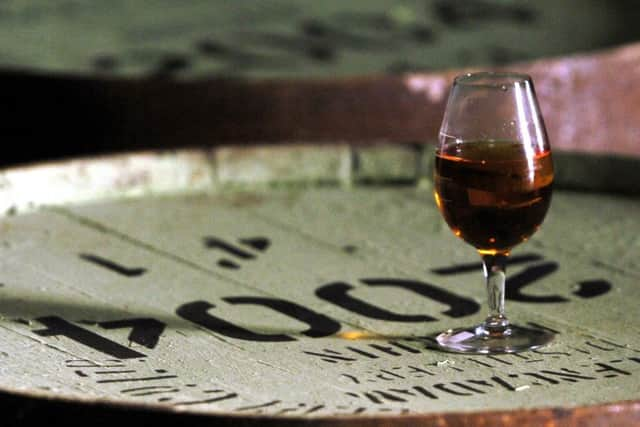Campbell Newell: Distillers' secure method of product provenance


Our globally famous industry remains at distilling’s cutting edge, and the rewards are significant against the backdrop of a major rise in international whisky demand that’s seen connoisseurs looking for ever more unusual and interesting products.
Of course, we Scots have led the way in disruptive distilling for centuries. In 1826, Robert Stein, the so-called ‘Henry Ford of the Whisky Industry’ invented a method of continuous distillation, allowing spirit to be produced much faster and resulting in a 30-fold increase.
Advertisement
Hide AdAdvertisement
Hide AdTwo centuries on, with over 120 active malt whisky distilleries now in operation, and that number set to swell, Scotland is still breaking the mould and reinventing the notion of what’s possible.


Three trends have taken hold, including alternative maturation/finishing in non-traditional casks, ultra-ageing, and premiumisation.
While Scottish producers are too often mistakenly thought to be behind the curve when it comes to innovation, the industry is increasingly recognising the need to share ideas, collaborate, and take inspiration from the likes of coffee roasters and chocolatiers. Some have gone further.
Indeed, perhaps we shouldn’t be surprised to see blockchain technology – which allows digital information to be distributed but not copied – forming an unlikely but pioneering alliance with our distilleries.
More typically associated with the worlds of FinTech and Bitcoin, the blockchain has wide uses, including the prevention of counterfeiting.
Only recently, Dunfermline-based Fusion Whisky and its partners Adelphi Distillery announced that their new release, The Winter Queen, would be a blend of European history and blockchain, engineered by fusing Scotch with malt whisky from the Netherlands. Adelphi pioneered the idea and the rest was literally history.
It’s actually the second whisky to use such technology following the release of both Fusion Whisky’s Australian blend, The Brisbane, and two of Adelphi’s AD spirits, this year.
The second expression of The Winter Queen was released to commemorate the coronation of Scottish princess Elizabeth Stuart – eldest daughter of King James VI of Scotland, King James I of England – who was crowned Queen of Bohemia 399 years ago. Crucially, more than six different malt whiskies have gone into the complex blend – and that’s where the blockchain comes in.
Advertisement
Hide AdAdvertisement
Hide AdEssentially, for Fusion Whisky, it’s a uniquely secure method of authoritatively detailing the provenance of its product, allowing consumers to understand every stage of a whisky’s journey, from the field in which the barley was sourced to who bottled it and when, while assuring them that no fraud has taken place.
In the case of The Winter Queen, the technology – developed for Fusion Whisky by Edinburgh tech firm Arc-Net – also gives the buyer the opportunity to discover more about Princess Elizabeth Stuart.
And in a very modern way, whisky aficionados are able to follow the story of their favourite tipple by scanning a QR code on the label.
It’s refreshing to see how an ancient industry is embracing modern technology to stay relevant and reach new audiences, with such new technology having massive implications for the authenticity, accountability, and security they can offer customers.
It could also be a game-changer with both producers and consumers winning thanks to the ability to access more information on each bottle of whisky than ever before, while eradicating any safety fears around the threat of counterfeits from unknown sources. In other words, potentially higher sales and, simultaneously, happier whisky drinkers.
Of course, with any emerging technology, there are drawbacks. For example, once an entry is made in the blockchain, it is impossible to correct.
The likes of the blockchain could also have permutations for the approach that companies take to intellectual property (IP). For instance, if they adopt new technology, then they are likely to need to leverage new forms of IP beyond the trade marks which they have traditionally used to protect their brands.
It’s a complex area and requires careful management – particularly where outdated and inefficient systems remain in place – so it’s prudent to move quickly to secure any fresh inventions with the help of the right support and advice, ensuring that Scotland’s intellectual capital is not only protected but allowed to thrive.
After all, strong innovations require equally strong protection.
Campbell Newell is a Chartered (UK) and European Patent and Trade Mark Attorney, Marks & Clerk LLP